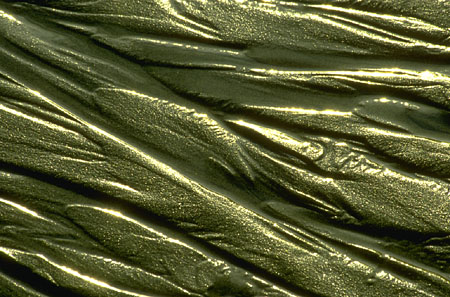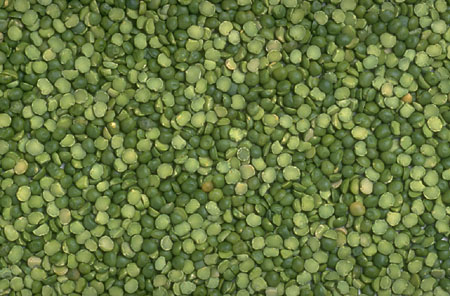LITR 5535: American
Romanticism

Sample Student Midterm 2006
GEORGE OTIS
DATE: 10/3/06
TOPIC: “ROOTS VIBRATION”, EARLY AMERICAN TEXTS AND
COOPER
Flamboyant as this title “root
vibration” may seem, it is sourced from Diaspora literature and
means the original and natural essence of man. It also means that state
of nature Emerson calls, “essence unchanged by man: space, the air, the river,
the leaf,” [vegetation, mountains, man and the firmament].To my mind, it is
that garden which is supposedly lost, which essence is everywhere to behold. The
undying and undeniably palpable/cognitive and romantic spirit that pervades
creation and persists in our being ness. I have picked this title because of its
relevance to an aspect of the course objective 1(a) “the individual in
nature.” Early American texts to be utilized for the discussion are Creation
story series from the first book of Moses in the handout (ii) letter to Luis de
Santangel regarding the first voyage (N.26-27), Selection from Genesis:
John Smith (N42-53) and Washington Irving’s Rip Van Winkle (N.446-460).My
approach will not be to discuss Cooper’s the last of the Mohicans at
the tale end , but to see how the text moderates or extend romanticism themes of
the early texts as the discussion flows.
The genesis story on creation
will be the best place to start for it does indeed establish the “root” in
nature. Also, according to Kristy Pawlak (in her 9/29/03 essay) it shows
“evidence of God’s greatness” and enhances our perception of man, nature
and God “in a sweet conjunction, majesty and meekness…” This Pawlaks
article titled “The Changing Attitude towards God, Nature, and Man in American
Romanticism,” has a handful of agreeable points to me. It asserts for instance
that due to the Age of Reason, man’s cognitive/psychological attitude towards
nature has suffered a distortion; with the result that man misapprehends nature
and his divine role in the natural scheme of things. Now quotes from the Genesis
story:
“9 And God said, let the waters under the heaven be gathered together unto one place, and let the dry land appear: and it was so; 10 And God called the dry land earth; 11 And God said let the earth bring forth grass, the herb yielding seed, and the fruit tree yielding fruit; 20 And God said, let us make man in our image, after our likeness and let them have dominion…over all earth.”
Now, what is the import of these extract? It is the fact
that visible nature has a spiritual and moral side; consciousness of which
enhances a holistic perception that affects man’s attitude and sense of
harmony. Hence in Cooper’s Mohican story, the devastation of the human
landscape through numerous conflicts
and killings would have been absent if the idea of man/nature /God cohesion was
present.
A recondite awareness as
mentioned above is demonstrated in Christopher Columbus’s letter to Luis de
Santangel, regarding the first voyage. This depiction of the original state of
Spain shares a similarity with the
virgin state of Genesis creation story: “trees of a thousand kinds and tall,
and they seem to touch the sky…some of them were flowering , some bearing
fruit, and some in another stage, according to their nature. And the nightingale
was singing… and there are birds of many kinds and fruits in great
diversity.” From the above picture, aspects of nature –vegetation has obeyed
God’s directive in terms of function; by so doing, become according to
Emerson, a beautiful “particle of God.” It is this beauty that is celebrated
in the landscape paintings of great artists of the romantic era such as William
Blake, and other British, French, Italian and American painters. In all, one
sees that the natural depictions in their works have the capacity to inspire one
to great heights of poetic and romantic sensibility. In Cooper’s case in his
Mohican story, Magua illustrates God’s creative benevolence and man’s
participation in the natural schemata thus: “…and these did he fashion to
his own mind. He gave them the island as he made it, covered with trees, and
filled with game.The wind made their clearings, the sun and rains ripened their
fruit; and the snow came to tell them to be thankful” (301).To my mind,
Cooper’s depiction brings nature to a functional state as we see the varied
elements not isolated in themselves but becoming part of the original energy and
spirit. Also cooper puts man at the center of nature just like God has ordered
in the Genesis story that the anthropomorphic man should have dominion over the
rest of creation. A dominion which I note does not mean destruction but an
awareness of cohesion. For only then, could nature become very delightful.
Emerson puts this phenomenon more succinctly, “the power to produce this
delight, does not reside in nature, but in man or in harmony of both”
(N.448).This is the original romanticism goal. The status whereby man is able to
proclaim: “the current of universal being circulates through me” (Emerson in
N, 448).This is a sublime state of the natural goal. The frenzy of which is
visible in the character of Cooper’s David in the Last of the Mohicans.
The frenzy of emotions as David mounts the stage and the sensation
created in the mind of his audience shows how much cohesion there is in
creation. Cooper describes this scenario as “The melody which no weakness
could destroy gradually wrought its sweet influence on the senses of those who
heard it;[causing] the sense to be forgotten.” Such transcendental impact of
the melody is an inspiration to forget human limitations and aspire to a the
knowledge of “the primitive sense of permanence of objects of nature” ,as
Emerson puts it. This is more like a celebration of the oneness of our
personality soul.
In John Smith’s narrative from
“General history of Virginia, New England and the summer isles,” the
romantic theme of harmony of creation is again enacted as captain smith
gives Opechananough, King of Pamunkey, a round ivory double compass dial.
To my mind, this instrument is a powerful symbol of the unity and harmony in
nature. “Like the jewel the roundness of the earth and skies, the sphere of
the sun, moon and stars, and how the sun did chase the night roundabout the
world and the sea, the diversity of nations, variety if complexion …” One
major issue raise by this reference is the issue of unity in diversity is
visible in Cooper’s Cora. In the Last of the Mohicans, she is
Cooper’s grand voice. In chapter two, Cora retorts, “should we distrust the
man, because his manners are not our manner; and that his skin is dark” in a
different context Cooper demonstrates what he means by “distrust” as Unca
and Heywood shake hands (75),thereby achieving what Emerson calls the universal
soul. That original state in nature that is found in “Genesis,” which
reflects the divine image, “the root,” the essential romantic deal.
In Irving’s rip Van winkle
(p448) another dimension to the issue of root vibration or natural status is
provoked as we observe a kaleidoscopic picture of nature’s temperament over
the Kaatskil Mountains: “every change of season, change of weather…every
hour of the day, produces some change in the magical hues and shapes of the
mountains. When the weather is fair and settled, they are clothed in blue and
purple, and print their bold outlines on the clear evening sky; but some times
when the rest of the landscape is cloudless, they will gather a hue of gray
vapors about their summits, which in the last rays of the setting sun, will glow
and light up a crown of glory”. The impact of the sun on vapor is an allegory
of death; as Emerson puts it, every “natural fact is symbolic of a spiritual
fact”. Also, there is no dirgy undertone because there is an awareness of a
cyclic order. In relation to death; seemingly, nature is made to conspire with
spirit to liberate man. In reference to the Last of the Mohicans, the
philosophy of death is perceive from the natural view of the native Indians as
Chingachgook scolds the mourners of Uncas, “why do my brothers mourn…why do
my daughters weep! That a youngman has gone to the happy hunting ground! That a
chief has filled his time with honor!”
By analysis all the writers agree
that death is inevitable. In the Genesis story death is more in the concept of
the loss of Eden. In Rip Van winkles narrative, death is symbolized
as a cyclic phenomenon; part of beauty in the great “circle of
motion” as the reader/ respondent pair
of Marie le Blanc and Gwendolyn Darrel (sept;16,2000) puts it. In The last of
the Mohicans death is treated with a great sense of romantic awe;
delineating that death is an inevitable conduit for humanity to unify with the
universal essence. Spinoza paints this natural phenomenon more succinctly “we
are related members of a single divine body and a single divine
[spirit]”Frost,1970,4).To cooper death is unification with the divine spirit;
so, hardly calls for mourning but a feasting.
Finally, the earlier texts
and their convergence in the Last of the Mohicans, lies more in
Cooper’s animation of natural phenomenon, through the depiction of nature’s
functional relationship with man. Also while earlier texts such as the Genesis
story or Irving’s narrative passively
symbolize death; Cooper interprets the actual sense of loss and realigns the
emotions towards a more comprehensible romantic ideal; thereby rendering the
concept a desirable phenomenon. Lastly, cooper’s depiction of the cohesion of
man, nature and God , does not only promote the Romanticism course objective of
“individual in nature,” but defines the individual as part of the
“roots,” a “particle” of the holistic universal personality; and, the
grandest particle at that.
WORKS CITED
Cooper, J.F. The last of the Mohicans. London:
Penguin, 1986.
Spinoza. “Ethics,” Master Works of philosophy
2vol.New York: McGraw, 1972.
Norton, W.B.The Norton anthology of American Literature.(6th
ed.)New York: Norton, 2003.
|
|
|
|


